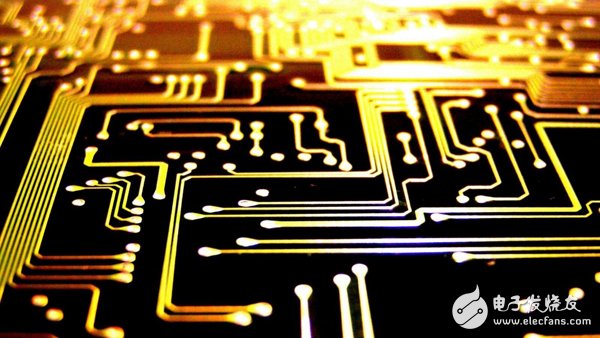I believe that engineers who are hardware engineers will start to enter the company. When designing the PCB, the old engineers will tell him that the PCB traces should not be taken at right angles, the traces must be short, and the capacitors must be placed nearby.
But at first we may not understand why this is done. It is not enough for us to use a few of their experiences. Of course, if you don’t pay attention to these details, you will be guilty of them in the future. "I have said how many times the capacitors must be placed nearby, and they can’t be put into effect, etc.", often experience tells us that in fact, those old engineers are only a part of the talents who really master the mystery. We will not Don't be upset, take a look at the information and get it quickly.
Until we were smashed several times, we went back to find relevant information. Why should we design the PCB capacitors to be placed nearby? After reading the information, we can understand some of them. However, the information on the Internet is very stupid, and it is rare to find a very comprehensive explanation. . The following content is an explanation of the capacitance decoupling radius that I reprinted. I believe that after reading it, you can answer the question and avoid similar problems.
The teacher asked: Why is the decoupling capacitor placed nearby?
Student A: Because it has a valid radius, it is far from valid.

An important issue with capacitive decoupling is the decoupling radius of the capacitor. Most of the data mentions that the capacitor placement should be as close as possible to the chip. Most of the data is about the placement distance from the perspective of reducing the loop inductance. Indeed, reducing inductance is an important reason, but there is another important reason that most of the data is not mentioned, that is, the problem of capacitor decoupling radius. If the capacitor is placed too far away from the chip beyond its decoupling radius, the capacitor will lose its decoupling effect.
The best way to understand the decoupling radius is to examine the phase relationship between the noise source and the capacitor compensation current. When the chip's current demand changes, a voltage disturbance occurs in a small local area of ​​the power plane. To compensate for this current (or voltage), the voltage disturbance must be sensed first. It takes a certain amount of time for the signal to propagate through the medium, so there is a time lag between the occurrence of a local voltage disturbance and the perception of the capacitance. Similarly, the compensation current of the capacitor also requires a delay to reach the disturbance zone. Therefore, the phase inconsistency between the noise source and the capacitor compensation current is inevitably caused.
The specific capacitance is best for the same noise compensation as its self-resonant frequency, and we measure this phase relationship at this frequency.
When the distance from the disturbance zone to the capacitor is reached, the phase of the compensation current is exactly 180 degrees out of phase with the noise source, ie, completely inverted. At this time, the compensation current no longer works, the decoupling action fails, and the compensated energy cannot be delivered in time. In order to effectively transmit the compensation energy, the phase difference between the noise source and the compensation current should be as small as possible, preferably in phase. The closer the distance is, the smaller the phase difference is, and the more the compensation energy is transmitted. If the distance is 0, the compensation energy is transmitted to the disturbance zone 100%. This requires the noise source to be as close as possible to the capacitance, which is much smaller. In practical applications, this distance is preferably controlled between (λ/40 - λ/50), which is an empirical data.
For example: 0.001uF ceramic capacitor, if the total parasitic inductance after installation on the board is 1.6nH, then the resonant frequency after installation is 125.8MHz, the resonance period is 7.95ps. Assuming that the signal travels at 166 ps/inch on the board, the wavelength is 47.9 inches. The capacitor decoupling radius is 47.9/50 = 0.958 inches, which is approximately equal to 2.4 cm.
The capacitor in this example can only compensate for power supply noise in the range of 2.4 cm around it, ie its decoupling radius is 2.4 cm. Different capacitors have different resonant frequencies and different decoupling radii. For large capacitors, because the resonant frequency is very low, the corresponding wavelength is very long, so the decoupling radius is large, which is why we do not pay much attention to the placement of large capacitors on the board. For small capacitors, because the decoupling radius is small, it should be as close as possible to the chip that needs to be decoupled. This is the most repeated emphasis on most data. The small capacitor should be placed as close as possible to the chip.
We can follow customers' drawings or design to make Customized wire harness for various industries: game machine, ATM, POS machine, etc.
Customized wire assembly with AVL components from original manufactures. Also harness with local equivalent componets are workable with short L/T and competitive price, also flexible MOQ.
Related Products:cigarrete charging cable,custom audio cables,fiber optic cable,cigarrete lighter cable.
Cigarrete Lighter Cable,Custom Audio Cables,Fiber Optic Cable,High Quality Electrical Wire Harness,Automotive Wiring Harness,Coiled Cable,Wiring Assemblies,Fuse Holder,Auto Plug Cable,Cigarrete Charging Cable
ETOP WIREHARNESS LIMITED , https://www.etopwireharness.com